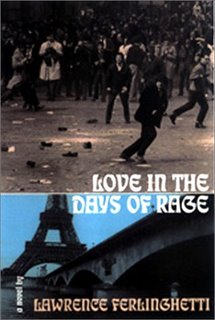
here's part of an interview with Ashanti Alston, former member of the Black Panther Party and the Black Liberation Army, now a prominent black anarchist thinker and speaker. Ashanti, who acts as a kind of wise advisor figure toward APOC, spoke on multiracial solidarity during a recent interview published on Next Left Notes, an online publication of the reconstituted Students for a Democratic Society. I've edited the text a little for clarity.
m(A)tt: Kind of getting back to what you were saying about SNCC, the experience of Northerners working in the South, you think there’s a parallel with that and what we’re seeing with the New Orleans social movements today, particularly the Common Ground Collective.
...
AA: ...but on a deeper level, it’s one of the things that Malcolm and others would always say, and in fact I think it’s just accurate, that white folks who really want to help the struggle should organize in their own communities. Today, you see basically the same thing. A lot of white activists will come to, for example, New York, From Minneapolis and all these other places, to work in a community of color. And we’re like, "yeah, but there’s racism in the white community--how come nobody’s willing to take that work on? Why are you romanticizing us?" And we can do this work in our communities. We need to figure out a better relationship. Your work should be in the communities that you know. But if a person’s been in a community ten, fifteen years, and you’re a part of it, then you need to do it the same way they did in the South, you need to really integrate your life into this community.
The pattern keeps repeating, and it means that the work in white communities is not being done because everybody’s leaving. I think it’s because, yeah, you recognize it’s very hard. And not only very hard, but it’s very dangerous for you young white activists to go into your own neighborhood and say "listen, we’ve got to deal with racism, we’ve gotta deal with neo-liberalism, anti-colonialism, whatever." You know that could be very dangerous. But it’s dangerous for us, there’s all kinds of different dangers. And at some point we really do need to push it, push it, that white activists cannot just keep coming to our communities.
The arrogant ones from the more hierarchical groups who come--and I think it’s just a form of racism--they’re gonna come with an already-made ideology and a plan, and they’re gonna tell us "this is the only way that you can be free, or you can effect change, revolutionary change in your life. Here’s the program. Here’s the way that it can go." For me, I don’t want to even deal with it--get out of my face, in fact, get out of my community. I would love to get to the point where we even stop them from coming to events in our community, pushing that kind of racist dialogue. Don’t tell us that this one guy, who made this analysis a hundred years ago, is the basis of your freedom. Like we don’t have brains, we can’t analyze. But I can at least appreciate more the anti-authoritarian white folks who at least come conscious that they come with racism, but are trying to also be accountable and aware, constantly, at least in trying. But still, the thing is like, someone’s got to do the work in the white communities. You can’t just keep coming to ours.

